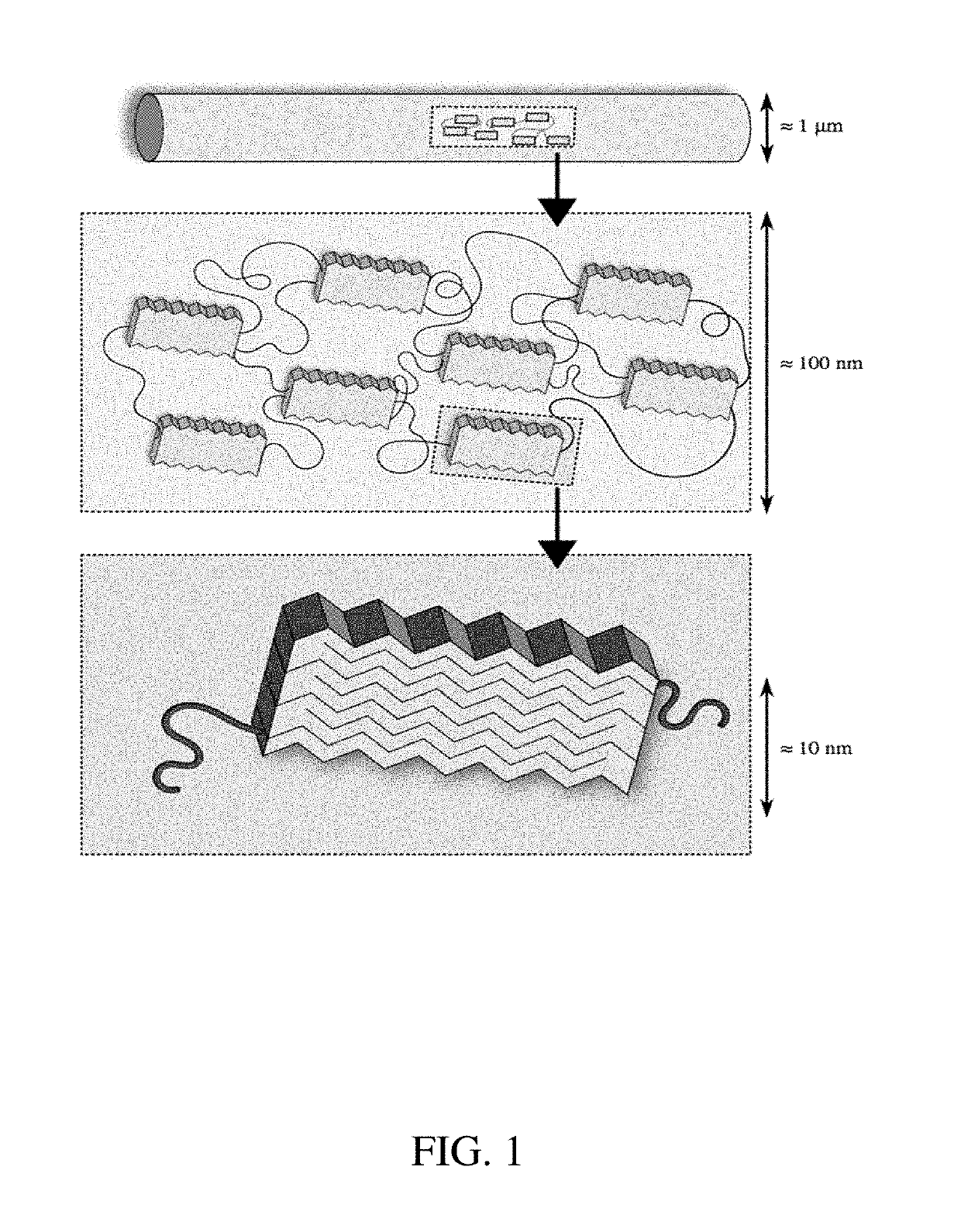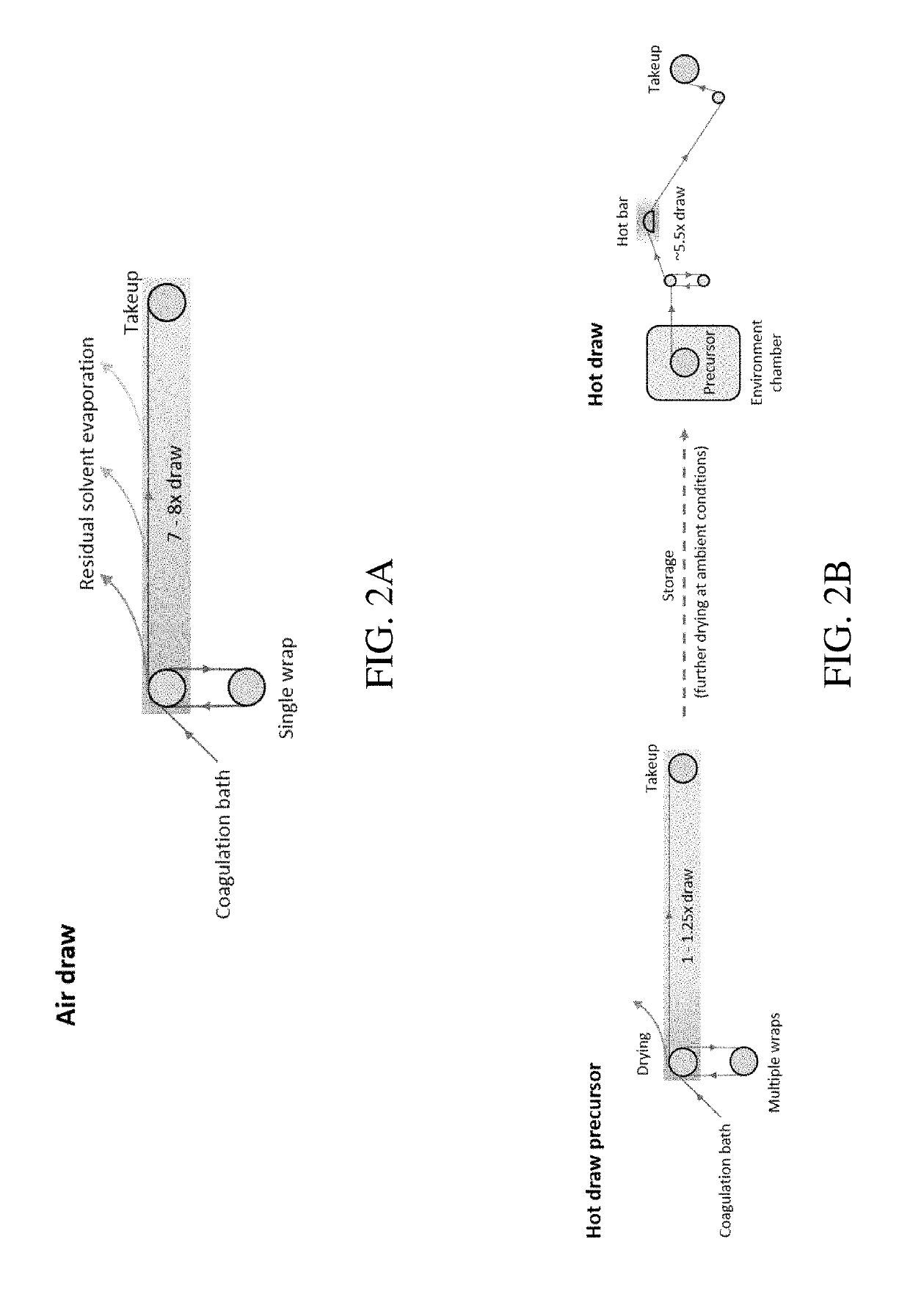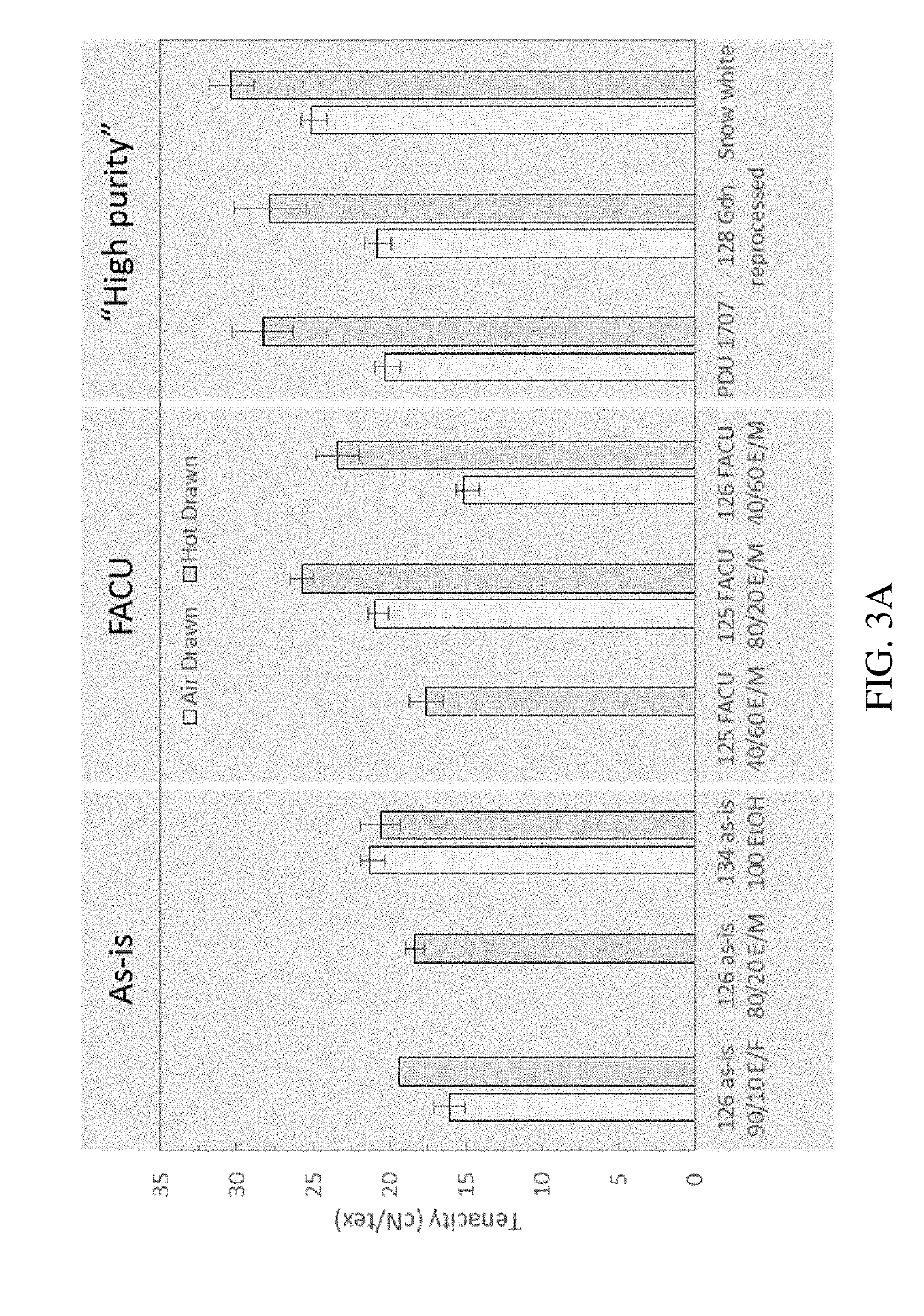Methods of Generating Highly-Crystalline Recombinant Spider Silk Protein Fibers
a technology of spider silk and protein fibers, which is applied in the field of generating highly-crystalline recombinant spider silk protein fibers, can solve the problems of variable properties of materials, inability to reproduce or scale for mass commercialization, and no work has precisely characterized the recombinant spider silk polypeptide that is used, so as to increase the formation of beta-sheets
- Summary
- Abstract
- Description
- Claims
- Application Information
AI Technical Summary
Benefits of technology
Problems solved by technology
Method used
Image
Examples
example 1
Recombinant 18B Polypeptide Powder
[0148]18B polypeptide sequences (SEQ ID NO: 1) comprising the FLAG tag were produced through various lots of large-scale fermentation, recovered and dried in powders (“18B powder”). The various lots of 18B powder are indicated in the table below in the column entitled “Source Ref” The 18B powders were subject to various post-processing techniques. The various types of post-processing techniques are indicated below in the column labeled “Reprocess technique”. 18B powders that were not post-processed are labeled “as is.”
[0149]Two lots of 18B powder (labeled “FACU” in the “Reprocess Technique” column) were subject to post-processing by dissolving the recombinant spider silk polypeptide in formic acid and re-precipitating the recombinant 18B polypeptide powder using isopropyl alcohol. One lot of 18B Powder was subject to re-processing and precipitation using guanidine thiocyanate according to a first protocol (labeled “Gdn Reprocessed” in the “Reprocess...
example 2
from Recombinant 18B Protein Powder
[0152]For each of the above-described samples, FTIR data collection was performed using a Bruker Alpha spectrometer equipped with a diamond-attenuated total reflection accessory. Spectra of were collected with 32 scans at 4 cm−1 resolution from 4000 to 600 cm−1 by pressing ˜10 mg of powder against the internal reflection crystal using an anvil. Absorbance values offset by subtracting the average between 1900 and 1800 cm−1 without bands. Spectra were then normalized by dividing the average between 1350 and 1315 cm−1 corresponding to the isotropic side chain vibration bands before calculating the average absorbance of the spectral region of interest. For Aliphatic [2996-2822 cm−1] a linear baseline was subtracted between the boundaries to remove the contribution of the neighboring amide A band while no baseline was subtracted from the C—O [1100-1000 cm−1] and ß-sheet [982-949 cm−1] regions.
[0153]Table 3 below lists the integrated peak area for differ...
example 3
nsition Temperature of the Recombinant 18B Protein Powder
[0155]Modulated Differential Scanning Calorimetry (MDSC) was used to determine the glass transition temperature of the different samples. A DSC, TA Instruments Q2000 was used to generate thermograms. Prior to the measurement, the instrument was calibrated using indium and sapphire to verify heat flow and heat capacity respectively, followed by an empty pan to verify the baseline. 5-10 mg of sample was pressed into a non-hermetically sealed aluminum pan and placed in the DSC cell along with an empty reference pan. The cell was purged with nitrogen at 20 ml / min for the duration of the experiment. Protein powder was heated at 125° C. for 1 hour to remove excess water, followed by a modulated ramp (3° C. / min+ / −0.6° C., 1 minute period) from −20° C. to 220° C. The Tg (glass transition temperature) was then determined from the reversing heat capacity thermogram by finding the point on the curve halfway between the tangents extrapola...
PUM
| Property | Measurement | Unit |
|---|---|---|
| Temperature | aaaaa | aaaaa |
| Temperature | aaaaa | aaaaa |
| Fraction | aaaaa | aaaaa |
Abstract
Description
Claims
Application Information
 Login to View More
Login to View More - R&D
- Intellectual Property
- Life Sciences
- Materials
- Tech Scout
- Unparalleled Data Quality
- Higher Quality Content
- 60% Fewer Hallucinations
Browse by: Latest US Patents, China's latest patents, Technical Efficacy Thesaurus, Application Domain, Technology Topic, Popular Technical Reports.
© 2025 PatSnap. All rights reserved.Legal|Privacy policy|Modern Slavery Act Transparency Statement|Sitemap|About US| Contact US: help@patsnap.com



